René Herse: The Beauty of Function
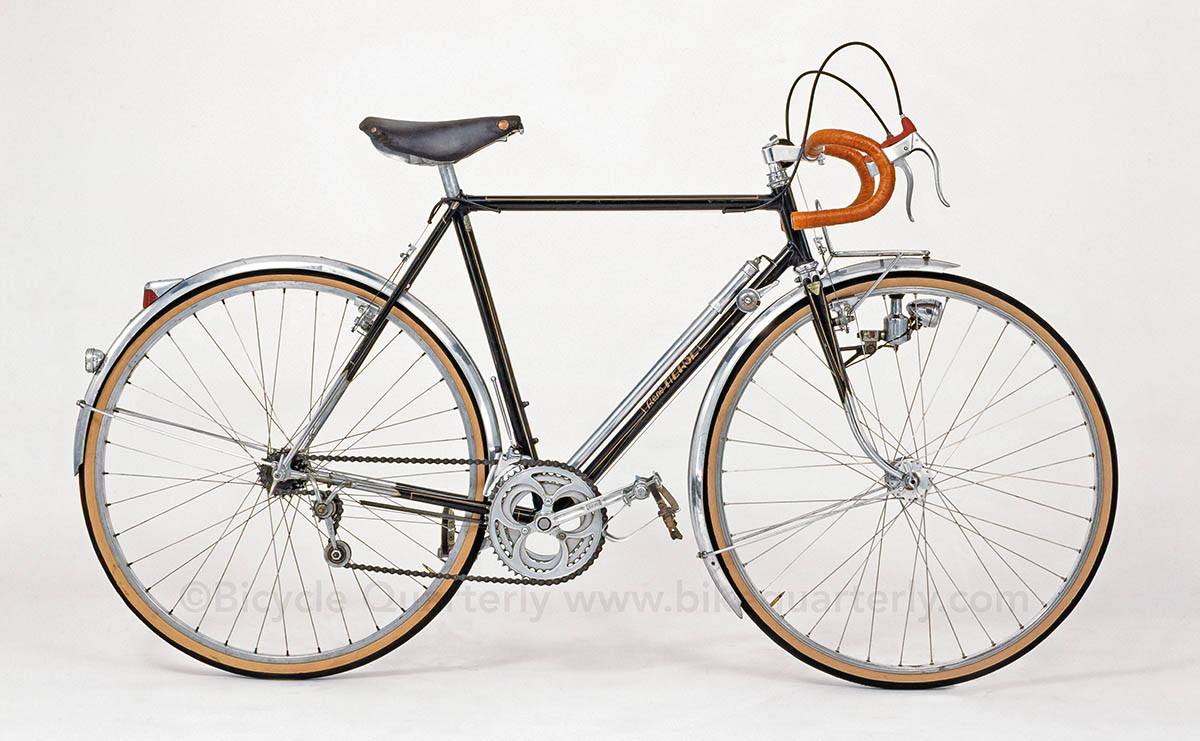
At Compass Cycles, we have taken much of our inspiration from René Herse and his legendary bikes. In the past, we’ve talked about the great performance and incredible reliability of Herse’s bikes, but what is even more striking is their beauty. You notice it immediately when you look at one of his bikes, or even a photo… but it took much study to unlock the secrets of the ‘magician of Levallois.’ (Levallois was the suburb of Paris where Herse made his bikes.)
Herse’s bikes don’t derive their beauty from complex lug shapes, but from their simplicity. It was Hiroshi Hagiwara, the maker of the Japanese Alps bicycles, who said in a recent Bicycle Quarterly interview: “A bicycle is a frame with two wheels. Everything else is a distraction.” When I thought about this while looking at a René Herse bike, I realized that Herse’s genius was to turn these distractions into assets that make the bike more beautiful.
The most obvious one are the fenders (above): They follow the outline of the wheel so gracefully that they enhance the bike to the point where the same bike without fenders would look naked.

Herse masterfully joined the frame and wheels: Herse’s custom-made dropouts place the wheel centers in the prolongation of the stays and fork blades. That way, the wheels are centered in the end points of the frame, which ties the whole bike together. As an added benefit, this allows the dropouts to be smaller, stiffer and lighter.
Other things are harder to notice: The two arms of the custom-made hanger for the Cyclo derailleur line up perfectly behind each other. This is very difficult to do, since the chainstays are angled upward and outward, and the two arms have to be bent very precisely to very different curves. It adds to the beauty of the bike, even if it’s not immediately apparent.
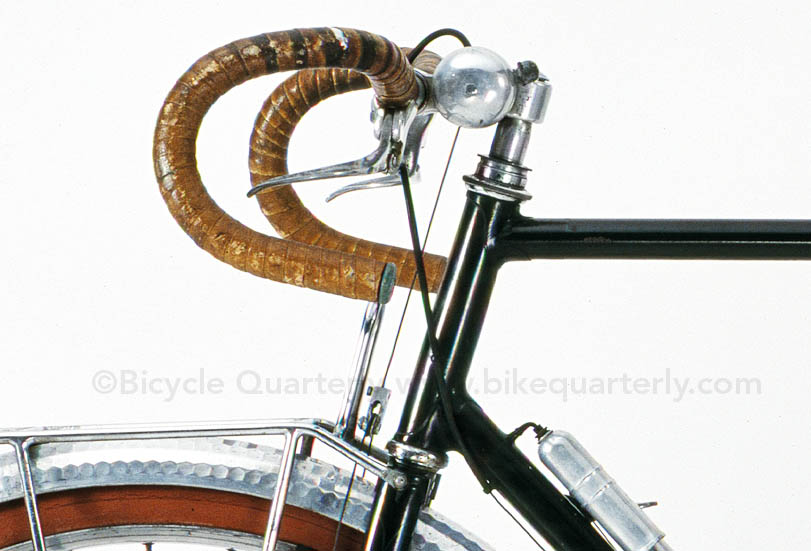
The brake cables are truly parallel to the head tube and seatstays. That way, they don’t distract from the frame, but underline the straightness of the tubes.

Herse considered the proportions of the frame beyond the simple question of frame fit. The tandem we rode in France last summer has twin lateral stays, but they don’t just line up whichever way. Herse subtly adjusted the frame’s dimensions so that the lateral stays are parallel, and the balanced sizes of triangles they form further adds to the attractiveness of the frame.
Herse’s genius was to achieve this with bikes that also fit their riders perfectly. Because all this magic wouldn’t mean much if it detracted from the ride.
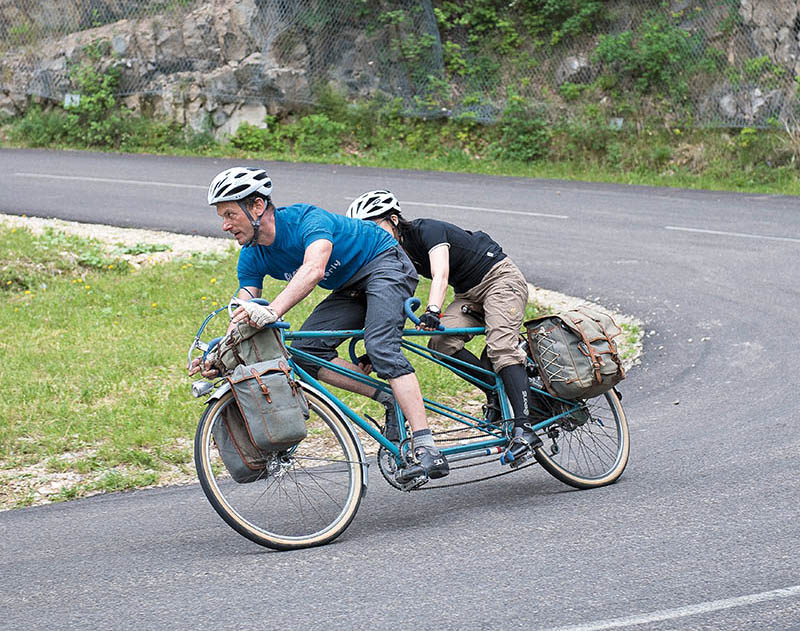
The opposite is the case. For René Herse bikes, the old adage that “What looks right usually is right” really holds true. His bikes and tandems ride wonderfully.

The beauty of Herse’s bikes makes it easy to forget that they were not intended as showpieces – they were designed to be ridden hard. Herse’s background reveals much about his thinking: He worked on prototype aircraft before he started making bicycle components and then bicycles. His aircraft experience shows in details like the custom screws: During the early 20th century, there were no universal specifications for bolts. Airplane makers made their own bolts, and to make sure that only correct bolts were used, each maker gave their bolt heads a distinctive shape. That way, a mechanic could immediately see if a bolt had been replaced with an incorrect one of suspicious quality. René Herse’s distinctive bolts for stems and seatpost binder have triangular heads that trace their origins to this practice.

Elegance and function also are combined in his lighting systems. The most important part of the photo above is what you don’t see: lighting wires. They run inside the rack, inside the fenders, and inside the frame tubes. Even where the current needs to be transmitted from the fork to the frame, there is no external wire: An insulated carbon brush on the steerer tube mates with an insulated brass ring inside the head tube, transmitting the current while allowing the fork to turn freely. Eliminating exposed wires not only is more elegant, but it also reduces the risk of wires getting snagged or breaking from being moved time and again.
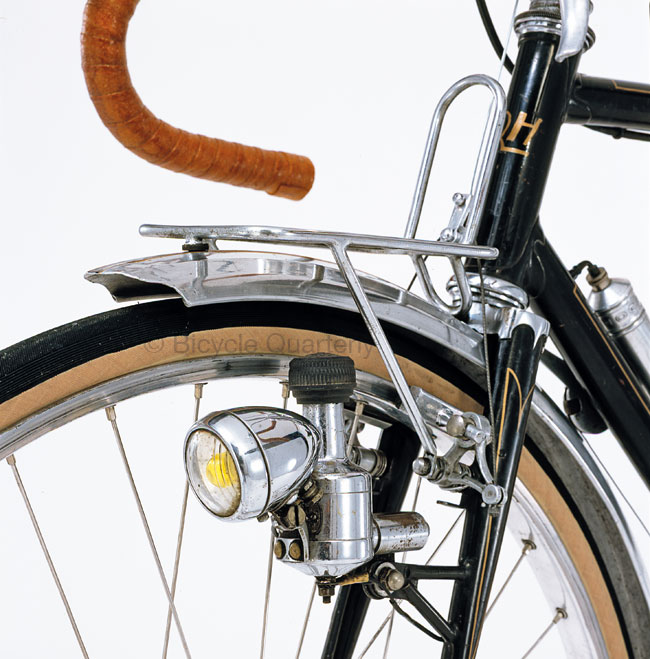
The beauty of René Herse goes beyond the frames. After all, Herse started as a maker of components, and only began making complete bikes during World War II, perhaps because it was difficult to sell components without bikes onto which to put them. Herse’s components, whether his brakes (above), cranks or stems, combined superlight weight with superb performance.
Often overlooked are small details, like his double-ended bolts for attaching the rack to the brake pivots. Many builder simply use the brake bolt to hold the rack tab as well, but this brings the risk that the bolt works loose. Herse’s solution is more elegant: His brake bolt has a forward extension onto which the rack mounts with a nut. It will never work loose. You’d expect no less from an airplane builder: If a bolt loosens in mid-air, you can’t just stop and tighten it!

Despite all their elegance, René Herse’s bikes have a certain handmade quality. It’s obvious that the lugs and stem were shaped by hand. A lot of modern builders make bikes that look more crisp and uniform. At first, I thought that this was because René Herse bikes were made in significant numbers – up to 350 left the workshop during the best years – and corners had to be cut. But René Herse’s hand-lettered logo indicates that the handmade aesthetic was intentional. Herse could easily have ordered decals, but instead, every frame was hand-lettered by a sign painter. Like great pottery, Herse’s bikes look handmade without appearing crude or unfinished. In my opinion, that makes them works of art.

For the complete story of René Herse, his bikes and their riders, read our 424-page book on the ‘magician of Levallois,’ lavishly illustrated with studio photos of his bikes and historic photos from the Herse family archives. We still have a few copies of the Limited Edition (with a slipcase and art prints of four unpublished photographs from the René Herse Archives), or the ‘standard’ edition at a more affordable price (also available in French). Click here for more information.
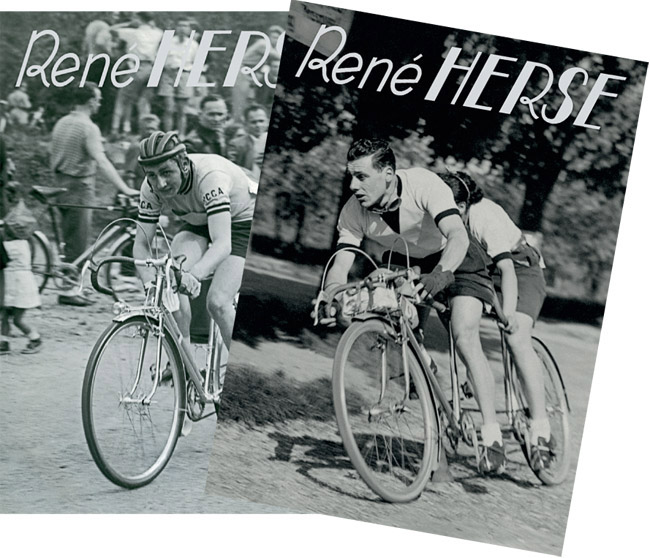
Two of my favorite images from the book are available as large-format, ready-to-frame Limited Edition posters. Hang them on your wall and be inspired every time you look at them. Click here to order our set.
And if you haven’t seen our video of a René Herse tandem in action, click here.


